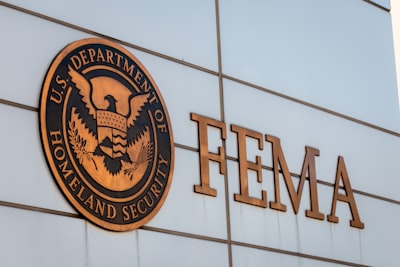Overview
The Federal Emergency Management Agency (FEMA) is an agency of the United States Department of Homeland Security (DHS), primarily responsible for coordinating the federal government’s response to natural and human-made disasters that overwhelm state and local capacities. Established in 1979, FEMA aims to ensure an effective and integrated approach to emergency management, which encompasses preparedness, protection, response, recovery, and mitigation efforts.
Historical Background
FEMA was established by Executive Order 12127 under President Jimmy Carter, consolidating various federal disaster response responsibilities into a single agency. In 2003, following the September 11, 2001, terrorist attacks, FEMA became part of the newly created Department of Homeland Security to enhance national emergency preparedness and disaster resilience.
Organizational Structure
FEMA operates through a central headquarters in Washington, D.C., and ten regional offices across the United States. The agency works in cooperation with state, local, tribal, and territorial governments, as well as with private and nonprofit partners. FEMA’s administrator, appointed by the President and confirmed by the Senate, leads the organization and reports to the Secretary of Homeland Security.
Key operational divisions include:
- Disaster Response and Recovery
- Preparedness and Continuity Programs
- Mitigation and Resilience
- Mission Support
- Logistics
Core Functions
FEMA's primary responsibilities include:
- Coordination of Federal Disaster Relief: Mobilizing federal resources to assist state and local governments during major disasters declared by the President.
- Emergency Preparedness: Providing training, grants, and planning assistance for emergency management capabilities at all levels.
- Mitigation Initiatives: Promoting strategies to reduce risks and impacts of future disasters, including floodplain management and building standards.
- Disaster Recovery Assistance: Administering financial aid programs, such as the Individuals and Households Program and Public Assistance Program, to support recovery.
- Public Alert and Warning Systems: Operating systems like the Integrated Public Alert and Warning System (IPAWS) and the National Flood Insurance Program (NFIP).
Criticisms and Debates
FEMA has faced scrutiny over its readiness, response time, and bureaucratic processes, particularly following high-profile disasters such as Hurricane Katrina (2005), Hurricane Maria (2017), and various wildfire and flooding events. Debates often center on:
- The balance of federal versus state/local responsibility in disaster management.
- FEMA’s swift deployment capabilities vs. administrative hurdles.
- Proposed reductions or restructuring, including shifting more responsibility to individual states or eliminating the agency.
- The adequacy of funding and staffing levels.
Contemporary Issues
In recent years, increased frequency and severity of natural disasters due to climate change have placed additional pressure on FEMA. The agency is frequently at the center of public and political debates, particularly following major disasters which test federal, state, and local coordination, and highlight underlying policy and infrastructure challenges.
Legacy and Importance
FEMA remains a cornerstone of U.S. emergency management, representing the federal government’s commitment to assist communities in crisis. Its evolution reflects broader changes in American disaster policy, intergovernmental relations, and national resilience strategies.
References:
- Federal Emergency Management Agency (Official Website)
- United States Department of Homeland Security
- Congressional Research Service Reports

Comments
No comments yet. Be the first to comment!